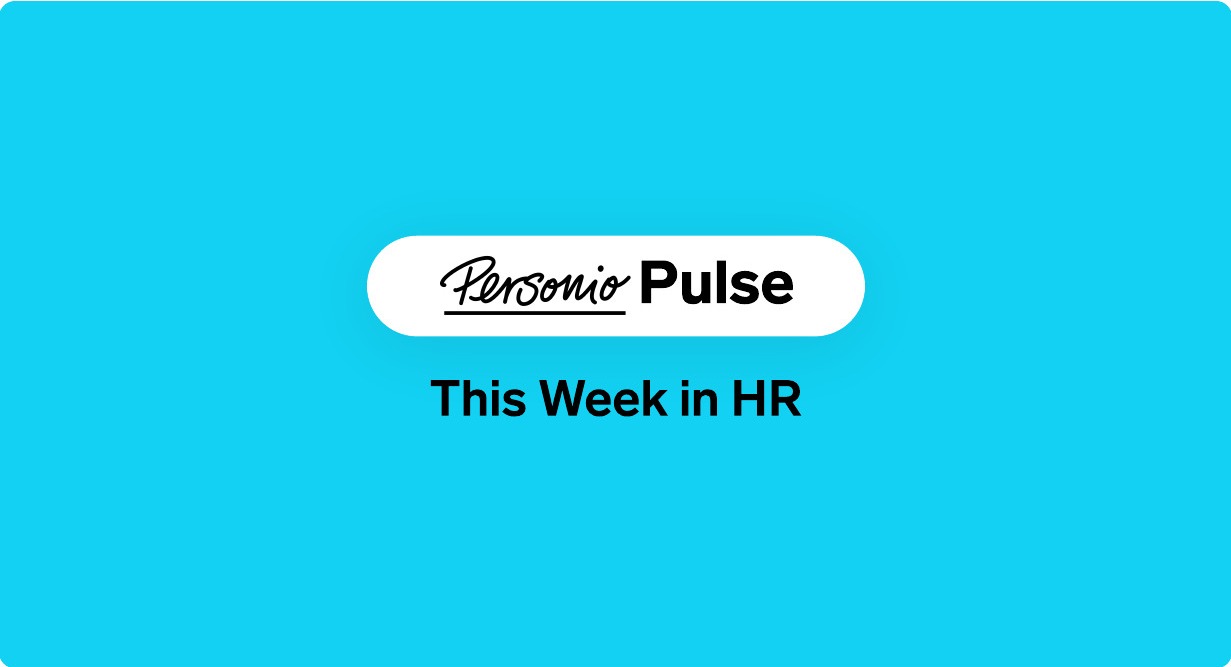
Our weekly HR newsletter
Stay ahead with the latest in HR, delivered straight to your inbox.
Subscribe here16. April 2024
Why is everyone talking about… voice sessions?

Welcome to Personio Pulse: This Week in HR, where each week we take a look at the latest trends in the world of work, what you need to know about them and what they mean for you as an HR professional.
This week we’re covering ‘voice sessions,’ what they are and what they might mean for your employees, your HR team and your organisation.
What you need to know
Do your employees feel heard? It’s becoming increasingly difficult to find out, especially with record numbers of Gen Z employees feeling increasingly sceptical about how much they can trust that their opinions are truly kept confidential.
This sense of psychological safety at work is giving rise to new ways of thinking about engagement. One of these takes the form of employee voice sessions in tandem with more traditional engagement surveys. But what are they and how can they help?
A voice session often takes the form of a moderated online event (like a Zoom call) where employees can communicate, often via chat, on their experience regarding engagement at work. New programmes like these shine a spotlight on an age-old topic: employee listening.
What others are saying about it
To give us a better sense of how employee listening has evolved, let’s turn to HR industry thought leader Josh Bersin: “Surveys are great and you can do lots of them easily. But you also have to conduct town hall meetings, team feedback sessions, post-mortem reviews and lots of ‘suggestion boxes’ where people can write their suggestions, recommend changes and point out problems,” he explains.
The real opportunity here is for organisations to dig deeper and go beyond the traditional markers of employee engagement. As Laura Sherbin, Managing Director of Consulting at Seramount, puts it: “It’s not just a question of, ‘Are you engaged or not?’ It really is getting into the drivers of that engagement, understanding what’s working.”
What that means for you
For HR teams, we’d recommend taking a layered approach to how you focus on employee listening and capturing employee sentiment from a variety of angles. Let’s consider some of the following steps in an order of operations:
Build out a survey strategy: Your organisation needs a way to build, customise and run surveys at scale. That requires deciding how often you want to run them and what you want to ask (for example, employee net promoter score or eNPS).
Augment your surveys accordingly: Things like employee voice sessions, one-on-one interviews or additional feedback forms can help ensure that your surveys are not your only source of truth — but a jumping-off point for more.
Decide, act and report on results: According to our latest independnt study, 38% of employees don’t feel leadership listens or acts on their feedback. There is a distinct need for organisations to report on the results of surveys and the decisions they plan to take.
What else should I read?
That's all for this week's edition of Personio Pulse: This Week in HR. Check back next week as we continue to dissect the latest trends impacting the ways we work.
Want more from Personio?
Visit our HR Knowledge Hub | Book a free demo | Start your free trial
🎧 Our HR podcast, Tomorrow’s People 🎧
Hear about the hottest HR topics and how to improve how we work. Listen here.

About Max Specht
Max Specht is a Content Marketing Manager at Personio, where he writes about a host of topics critical to the HR industry: recruiting, onboarding, development, and more. As a journalist, his goal is to help experts in the field of HR share their insights in a digestible, actionable way.
